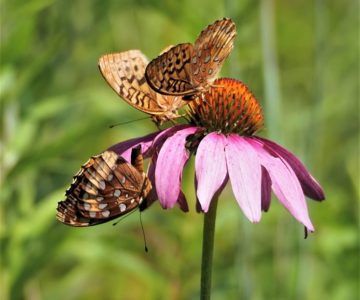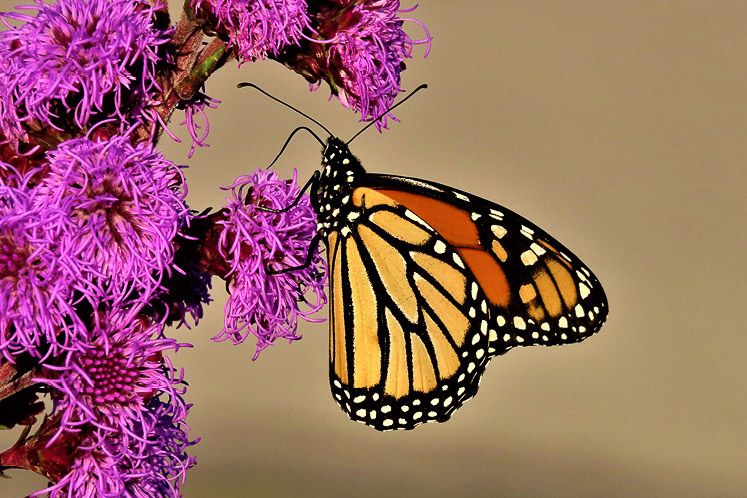A Monarch Magnet
The sweet nectar of liatris ligulistylis is renowned for its ability to lure monarch butterflies to gardens.
Here’s a mouthful: Liatris ligulistylis. Say that quickly three times! This flower’s common names are rocky mountain blazing star and meadow blazing star, but I’ll use the scientific name to avoid confusion.
Although there are other varieties of blazing star available, L ligulistylis stands stem and flowers above all of them for its ability to lure monarch butterflies to gardens. The monarchs find its nectar irresistible. (Note: milkweed is still essential for monarch reproduction. But for feeding adult monarchs, Liatris ligulistylis can’t be beat.)
This lovely late summer wildflower grows naturally on the Canadian prairies but is just as happy here, given sun and limited competition. I live in suburbia where turf rules. But even in my nature-impoverished neighbourhood, the moment Liatris ligulistylis unfurls its mid-August blossoms, monarchs arrive. By late August, 20 or more monarchs swirl in my yard on sunny days.
The remarkable monarch appeal of this plant raises some interesting questions. How on earth do they find it, or any plant, in urban landscapes? Do they follow visual cues, olfactory cues, or both? Do they have some way to “speak” to other monarchs? “I’ve found Liatris ligulistylis – come hither!”
Another question is whether the seductive appeal of Liatris ligulistylis is wholly positive. Is it so appealing that monarchs linger too long, supping its nectar instead of hastening to migrate? Is this liatris a floral siren, drawing monarchs to their doom with sweetness?
Let’s assume Liatris ligulistylis is what it appears to be – a boon for migrating monarchs. Should we be planting more of it even though it grows no closer to Ontario than the American Midwest? A non-native, yes, but do the monarchs care?
Monarchs still conceal secrets – among them, the mystery of their epic migrations and how they find the flowers that power their flight. Revealing more of the monarchs’ magic will stoke our curiosity and, perhaps, help us to help them.
Related Stories

Midsummer Pollinator Plants
Aug 8, 2023 | | Notes from the WildSummer holidays might be halfway over, but the bees are still having a field day thanks to these flowering pollinator plants

Transforming Turf into a Meadow Ecosystem
Sep 12, 2022 | | Notes from the WildFrom a swath of turf grass came a thriving meadow ecosystem full of wild flowers, pollinators and biodiversity.









I knew this late flowering tree from the orient was great for bees, but didn’t realize it brought the monarchs in as well Janet. Thanks! (Don’t think I can squeeze one in to my already well treed yard though 🙂 )
Don Scallen from Halton Hills on Sep 18, 2023 at 10:25 am |
Hello Don,
I thought you might like to know that the Seven Sons tree is also a magnet for Monarch butterflies. I had five of them on our tree yesterday, It has lovely white scented flowers.
Janet
Janet from Mississauga on Sep 18, 2023 at 8:41 am |
Hi Barbara,
A great spot for this plant and many others is Red’s Nursery on Highway 25 just south of Acton.
If they don’t have any remaining this year, they should in the spring.
And if for some reason you can’t find it there, let me know.
I may have an extra bulb or two.
Cheers,
Don
Don Scallen from Halton Hills on Sep 8, 2023 at 12:38 pm |
Any suggestions as to where one might purchase this Liatris? Thanks.
Barbara on Sep 6, 2023 at 8:48 am |